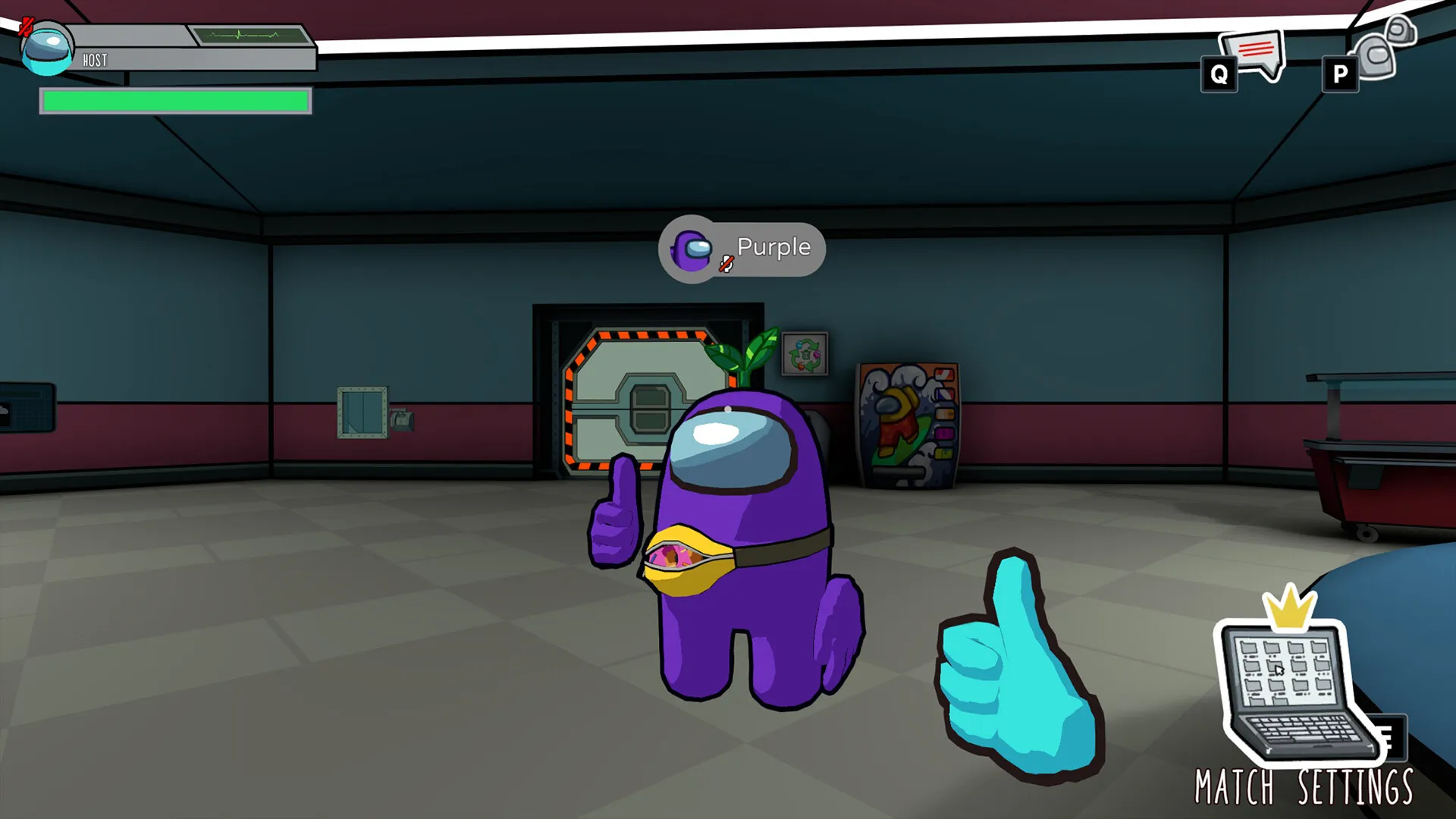Among Us 3D, developed by Schell Games in partnership with Innersloth and released on May 7, 2025 for PC, reimagines the hit social deduction formula in a first-person, three-dimensional setting. Players take on the roles of Crewmates or Impostors within the familiar layouts of The Skeld and Polus, now experienced through corridor-tight camera angles and immersive, on-the-fly task interaction.
This iteration drops the requirement for VR hardware, widening access while retaining the core tension of secret betrayals and emergency meetings. A proximity-based voice-chat system replaces third-party audio tools, and a new Tag mode, dubbed “The Infected,” offers a race-and-infect twist on the classic cat-and-mouse gameplay. First impressions hinge on the novelty of exploring well-worn maps from a fresh perspective and the promise of in-game voice that can turn every hallway into a stage for whispered paranoia.
Core Gameplay & Modes
Among Us 3D shifts movement from overhead point-and-click to WASD-driven navigation, with jump-to-interact mechanics and a field of view designed for claustrophobic corridors. Tasks become spatial puzzles: wiring panels now require locating wall-mounted nodes in three dimensions, and asteroids must be shot down with an on-screen reticle—each action feeling more tactile than its 2D counterpart. This spatial retooling heightens immersion but can also introduce motion discomfort for players new to first-person indie titles.
The social deduction loop remains intact: Crewmates complete tasks or raise the alarm in meetings, while Impostors sabotage systems, slip through vents, and sow doubt. Proximity chat ties voice volume to player distance, rewarding stealthy eavesdropping but punishing loud corridors. This integration of spatial audio deepens narrative possibilities, as overheard whispers can shape alliances or trigger dramatic betrayals.
Tag Mode, borrowing from infection-style mechanics seen in Halo’s multiplayer, sends one Infected out to convert Crewmates by touch. Crewmates win by finishing a task quota; Infected win by infectious spread. Shorter rounds (often under ten minutes) encourage rapid decision-making, though sparse active lobbies can cut sessions even shorter.
Matchmaking toggles between random quick-match queues and private rooms with codes. Quick matches can drop players into mid-game or underpopulated lobbies, making private sessions with friends the most reliable option. Map and mode selection happens before code entry, but the lack of a visible lobby browser means players sacrifice choice for speed.
Presentation: Visuals, Audio & Immersion
Character models retain their cartoonish proportions but gain depth in three dimensions. Crewmates’ stubby legs and floating heads feel oddly endearing at eye level, and cosmetic hats cast playful shadows. A basic selection of free skins gives way to premium options purchasable with Stardust, a paid currency—echoing a trend in indie titles like Hollow Knight’s charm pack.
The Skeld and Polus maps benefit from dynamic lighting and layered textures. Flickering corridor lights on Polus create tension, while The Skeld’s vents and admin rooms now feel more authentic. Mira HQ’s absence is notable, leaving players to hope for future map updates.
Audio reuses original beeps and alarms, supplemented by footstep spatialization and distant task audio. In-game voice chat often sounds compressed, with robotic artifacts that can obscure intent or tone. Text chat persists as a fallback, but its minimalist interface—plain bubbles and static text—lacks the personality of the original’s animated chat system.
Technical Performance & Quality-of-Life
Players report occasional task-completion glitches, such as wiring panels not registering or download tasks stalling. Late-joiners sometimes spawn as active Crewmates instead of ghosts, creating balance issues. Frame rates remain stable on mid-range rigs, though older GPUs can struggle during crowded lobbies.
A lobby browser is absent, replaced by automatic matchmaking that prioritizes speed over choice. Menu navigation flows directly from launch to join/create screens, but lacks advanced filters for language or map preference. Toggling voice chat on or off requires diving into settings mid-game, rather than a quick lobby switch.
Quality-of-life features like player-kick voting and detailed lobby info from the original are missing. Control remapping and audio sliders exist but are buried in submenus. Cosmetic purchases are handled via a simple storefront, yet the reliance on Stardust limits free-to-play customization. Developers have teased limited-time events and new roles, suggesting a roadmap that may fill current gaps.
Closing Thoughts & Recommendation
Among Us 3D succeeds at immersing players in a first-person version of a proven social formula, especially when lobbies are full of friends. The integration of proximity voice chat and spatial tasks adds emotional stakes, though technical hiccups and a lack of lobby controls can frustrate. Infection-style Tag mode offers a quick, kinetic alternative, but inconsistent matchmaking holds it back.
For groups seeking fresh ways to bluff and accuse, this title delivers memorable moments. Solo players or those craving polished systems might prefer to stick with the original 2D experience or explore dedicated indie alternatives that balance narrative choice with tighter lobby management.
The Review
Among Us 3D
Among Us 3D delivers a fresh, immersive twist on the social deduction template, with tactile tasks and proximity voice chat that heighten suspense. However, technical hiccups, limited matchmaking controls and sparse content dampen the novelty. While private lobbies with friends showcase its potential, the overall experience feels half-finished and less polished than its 2D predecessor.
PROS
- Immersive first-person perspective on classic maps
- Built-in proximity voice chat for dynamic deception
- Engaging Tag mode adds fast-paced variety
- Tactile, 3D-adapted task interactions
- Affordable price point
CONS
- Spotty voice quality with robotic artifacts
- Limited matchmaking controls and no lobby browser
- Occasional task and late-join glitches
- Only two maps at launch
- Cosmetics locked behind paid currency
